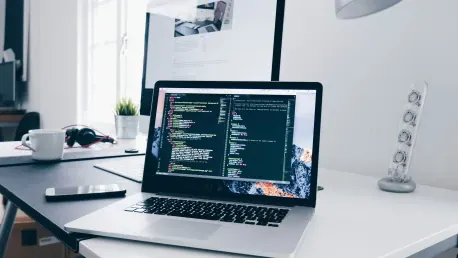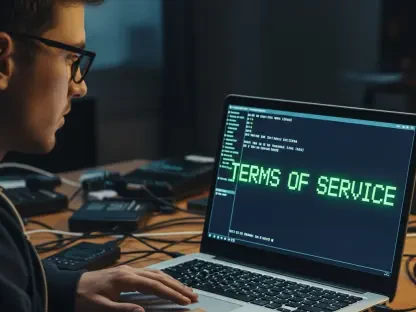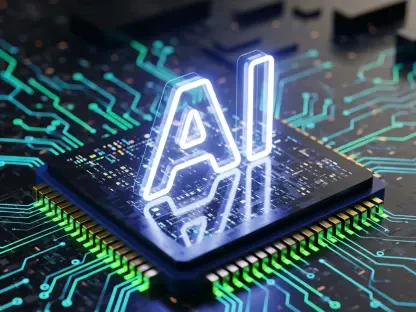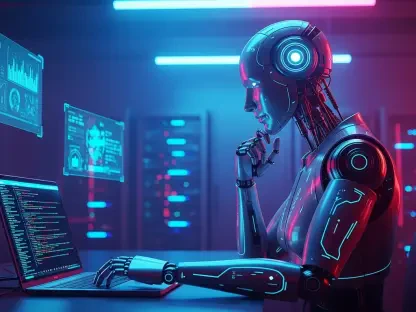Developing advanced and interactive terminal-based applications has always been a challenging task. Crafting sophisticated user interfaces within a terminal environment demands an exceptional level of expertise and often relies on tools with limited capabilities. Traditional terminal applications are powerful but typically lack the sleek user interfaces found in web or desktop applications. To address these limitations, the Python Rapid Application Development (RAD) framework “Textual” emerges as a game-changer.
The Challenges of Terminal-Based UI Development
Creating advanced user interfaces for terminal-based applications has significant hurdles, mainly due to the absence of modern features like color management, mouse support, and animations. The tools that developers typically use for terminal-based UI development often result in basic applications devoid of the dynamic and intricate designs seen in today’s software. Because of these limitations, the end result is usually an interface that feels outdated and fails to meet contemporary user expectations.
Moreover, the learning curve for these traditional tools is exceptionally steep. Developing sophisticated UIs within terminal environments often necessitates a deep understanding of low-level programming intricacies and specialized terminal-specific knowledge. This complexity can be a significant deterrent for many developers, limiting the potential advancements and innovations that could be achieved within terminal applications. Only the most experienced developers usually venture into this niche, making the scope of available terminal-based applications quite limited.
Limitations of Traditional Tools
One of the key limitations is the rudimentary nature of traditional tools available for terminal-based UI development. Most of these tools can only create basic user interfaces, lacking the advanced features that a modern-day application demands. Missing elements such as color management and animations make the user experience feel archaic and less engaging. Developers who wish to incorporate these features into their terminal applications face considerable challenges due to the inherent limitations of these legacy tools.
The absence of mouse support is another glaring shortcoming. While web and desktop applications have embraced mouse interactions to offer intuitive user interfaces, terminal-based applications still lag significantly. This lack of interactivity hampers the user experience, making terminal applications less appealing and harder to use. Consequently, developers are deterred from creating terminal applications that meet modern standards, further constraining the advancement of terminal-based UI designs.
Addressing Modern User Expectations
With users increasingly expecting fluid, interactive, and visually appealing interfaces from modern applications, the traditional terminal interface often falls short. Simple text-based designs, devoid of elements like color, mouse interaction, and animation, do not align with contemporary user expectations. This gap in functionality renders terminal applications less engaging and less effective, ultimately limiting their adoption and utility.
Developers looking to bring terminal applications up to par with modern standards face many hurdles. The limitations of existing tools make it challenging to create applications with the contemporary features users increasingly expect. As users become accustomed to high levels of interactivity and visual richness in software, the discrepancy between traditional terminal interfaces and other application environments becomes even more pronounced. Addressing these expectations is crucial for the evolution and broader adoption of terminal-based applications in various fields.
Introducing Textual: A New Era for Terminal UIs
Textual sets out to redefine the landscape of terminal-based UI development by introducing features that make it comparable to modern web and desktop environments. With its innovative approach, Textual aims to bridge the gap between traditional terminal applications and contemporary user expectations. This Python RAD framework offers developers a robust set of tools to build sophisticated and visually appealing terminal-based applications.
The framework extends its functionality beyond the limitations of traditional tools, providing a versatile environment where developers can create dynamic and intricate user interfaces. By leveraging Textual, developers can explore new possibilities in terminal-based UI design, crafting applications that go beyond basic functionalities and offer a more engaging and interactive user experience. Textual’s approach broadens the scope of what is achievable in terminal environments.
Bridging Terminal and Web Environments
One of the standout features of Textual is its ability to function seamlessly in both web browsers and terminal environments. This dual compatibility is a significant advancement, as it allows developers to leverage their knowledge of modern web development techniques to create applications that are functional across different platforms. Textual’s API, inspired by contemporary web development practices, makes it accessible to a broader range of developers familiar with these techniques, significantly lowering the barrier to entry.
This dual functionality means that developers do not need to master the intricacies of terminal UI design to create sophisticated terminal applications. Instead, they can apply their existing web development skills, greatly simplifying the development process. This approach makes it easier for developers to create applications that provide a modern user experience, whether they are running in a terminal or a web browser.
Enhancing Visual Appeal and User Interactions
Textual takes terminal-based UI development to new heights by supporting up to 16.7 million colors. This vast color range allows developers to create detailed and colorful user interfaces, enabling the design of visually rich applications that were previously unachievable in terminal environments. The ability to use such a broad spectrum of colors enhances the overall user experience, making terminal applications more engaging and visually appealing.
Besides color support, Textual also incorporates features like smooth, flicker-free animations. These animations bring a new level of interactivity to terminal applications, making the user experience more engaging and lifelike. The inclusion of mouse interaction support further elevates the interaction possibilities, aligning terminal applications more closely with the capabilities users expect from modern software solutions. These features collectively transform how developers approach terminal-based UI design.
Simplifying Development with Textual
One of Textual’s major strengths lies in its ability to simplify the complex process of terminal-based UI development. The framework is designed to make it easier for developers to create intricate and dynamic user interfaces without needing extensive knowledge of low-level programming or terminal-specific intricacies. Textual’s design principles emphasize simplicity and efficiency, empowering developers to focus on building innovative features rather than wrestling with the underlying complexities of terminal UI design.
The framework’s robust layout engine and modular design principles streamline the development process, allowing developers to construct sophisticated layouts with ease. This modular approach not only accelerates development but also ensures consistency across different parts of the application. By reducing the complexity associated with advanced UI development, Textual makes it feasible for a broader range of developers to create high-quality terminal-based applications.
Robust Layout Engine and Reusable Components
Textual’s layout engine is a significant advancement in simplifying terminal-based UI development. The engine allows developers to create complex and organized user interfaces effortlessly, supporting intricate layouts previously difficult to achieve in terminal environments. Additionally, Textual includes a range of reusable components that developers can incorporate into their applications, further streamlining the development process.
Reusable components ensure consistency and efficiency, allowing developers to build sophisticated user interfaces without starting from scratch each time. This approach reduces development time and minimizes errors, contributing to a more stable and reliable application. The combination of a robust layout engine and reusable components makes Textual a powerful tool for developing advanced terminal-based user interfaces that meet modern standards and user expectations.
Seamless Installation and Compatibility
Textual simplifies the setup process with its straightforward installation, requiring just a simple pip install command. This ease of installation ensures that developers can quickly get started with the framework without needing to navigate complex setup procedures. Textual is also compatible with multiple operating systems, including Windows, Linux, and macOS, making it accessible to developers regardless of their preferred platform.
Compatibility with Python 3.8 or later ensures that developers have access to modern Python features and libraries, enhancing the overall development experience. This alignment with the latest advancements in the Python ecosystem allows developers to leverage the full capabilities of the language, further simplifying the development of sophisticated terminal-based applications. By making the setup process seamless and ensuring broad compatibility, Textual removes common barriers to entry, enabling more developers to explore terminal-based UI development.
Empowering Developers with Modern Tools
Textual goes beyond offering a framework for creating terminal-based user interfaces; it also provides a comprehensive set of development tools designed to streamline the creation and testing of applications. These tools facilitate rapid iteration and early identification of issues, enhancing the overall development workflow. By offering a holistic development environment, Textual minimizes common pitfalls, allowing developers to bring their innovative ideas to life quickly and efficiently.
This suite of development tools, along with Textual’s robust feature set, empowers developers to push the boundaries of what is possible within terminal environments. Whether the aim is to create simple utilities or complex interactive applications, Textual provides the capabilities needed to deliver sophisticated and engaging terminal applications.
Development Tools and Testing Capabilities
Textual includes a suite of development tools that significantly simplify the creation and testing of terminal-based applications. These tools are designed to streamline the development workflow, allowing developers to iterate rapidly and identify issues early in the process. By providing a comprehensive development environment, Textual minimizes common pitfalls and barriers, enabling developers to bring their ideas to life quickly and efficiently.
The inclusion of these tools enhances the overall productivity of developers, allowing them to focus on innovation rather than getting bogged down by the intricacies of terminal UI development. This approach ensures a smoother development experience and leads to the creation of more stable and reliable applications. The combination of a robust framework and comprehensive development tools makes Textual a game-changer for terminal-based application development.
Enabling Sophisticated Terminal Applications
Creating advanced and interactive terminal-based applications has always been a challenging endeavor. Designing complex user interfaces within a terminal environment requires a high level of expertise and often depends on tools with limited functionalities. While traditional terminal applications are robust, they generally lack the polished user interfaces that are typical of web or desktop applications. This creates a gap for developers aiming to create more sophisticated and visually appealing terminal experiences.
Addressing these limitations, the Python Rapid Application Development (RAD) framework known as “Textual” emerges as a revolutionary solution. Textual allows developers to design terminal applications that feature modern, sleek, and interactive user interfaces. With its robust set of tools and capabilities, it opens up new possibilities for creating terminal apps that were traditionally constrained by the limitations of earlier tools.
Textual’s design focuses on ease of use, enabling developers to build applications faster without compromising on the appearance or functionality. Whether you are an experienced developer or a beginner, Textual offers a simplified approach to creating dynamic and compelling terminal user interfaces, making it a game-changer in the realm of terminal application development.









